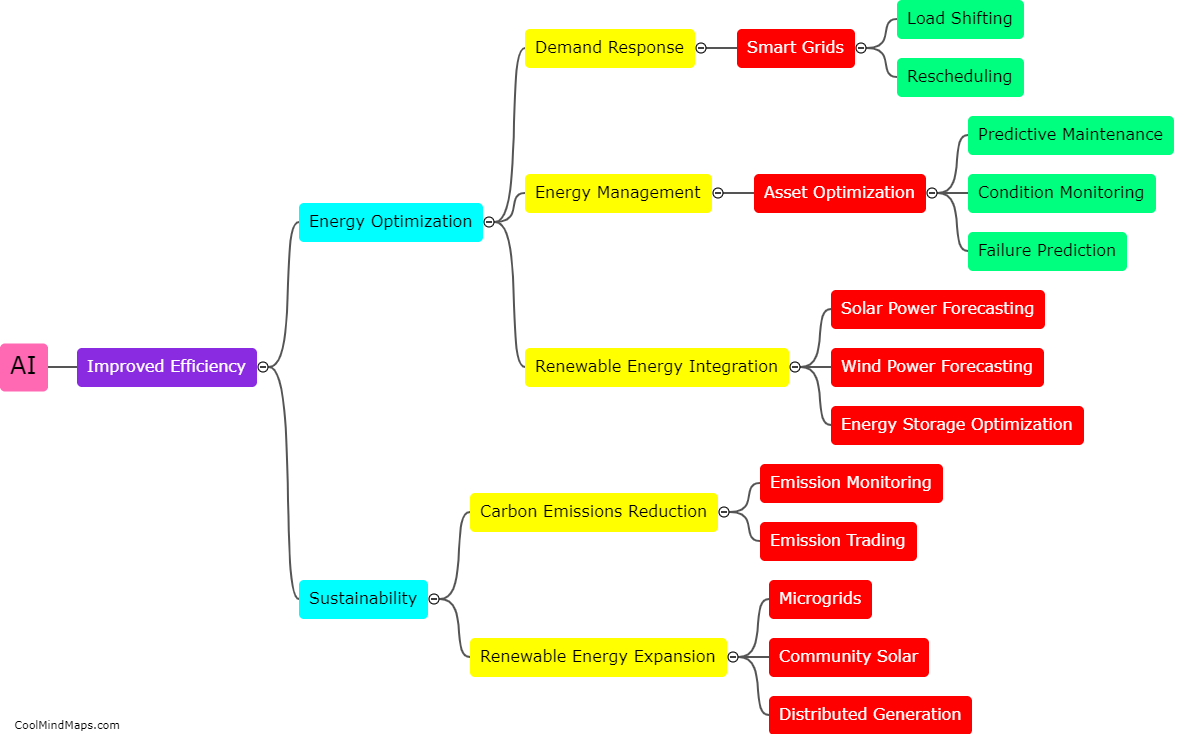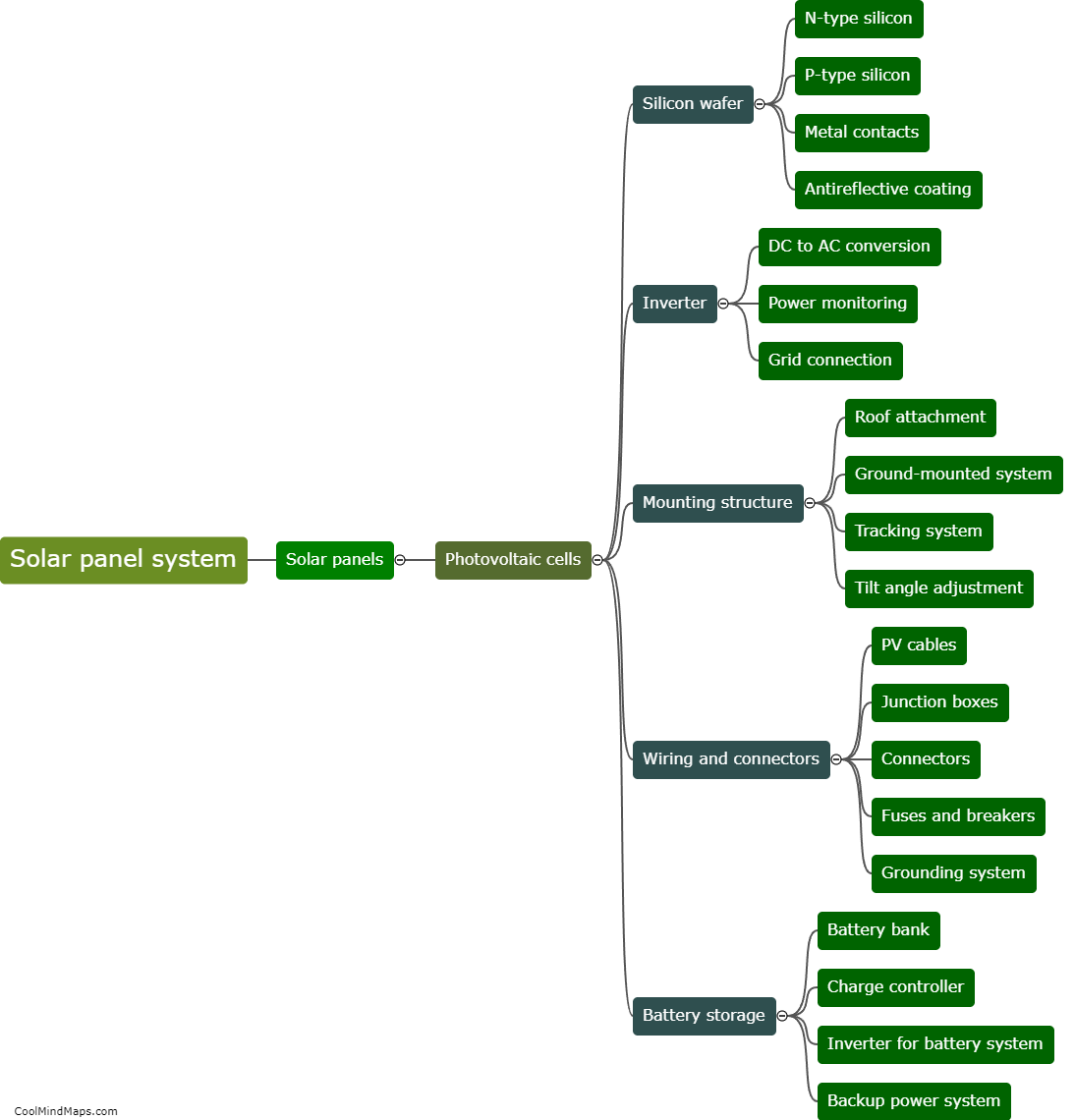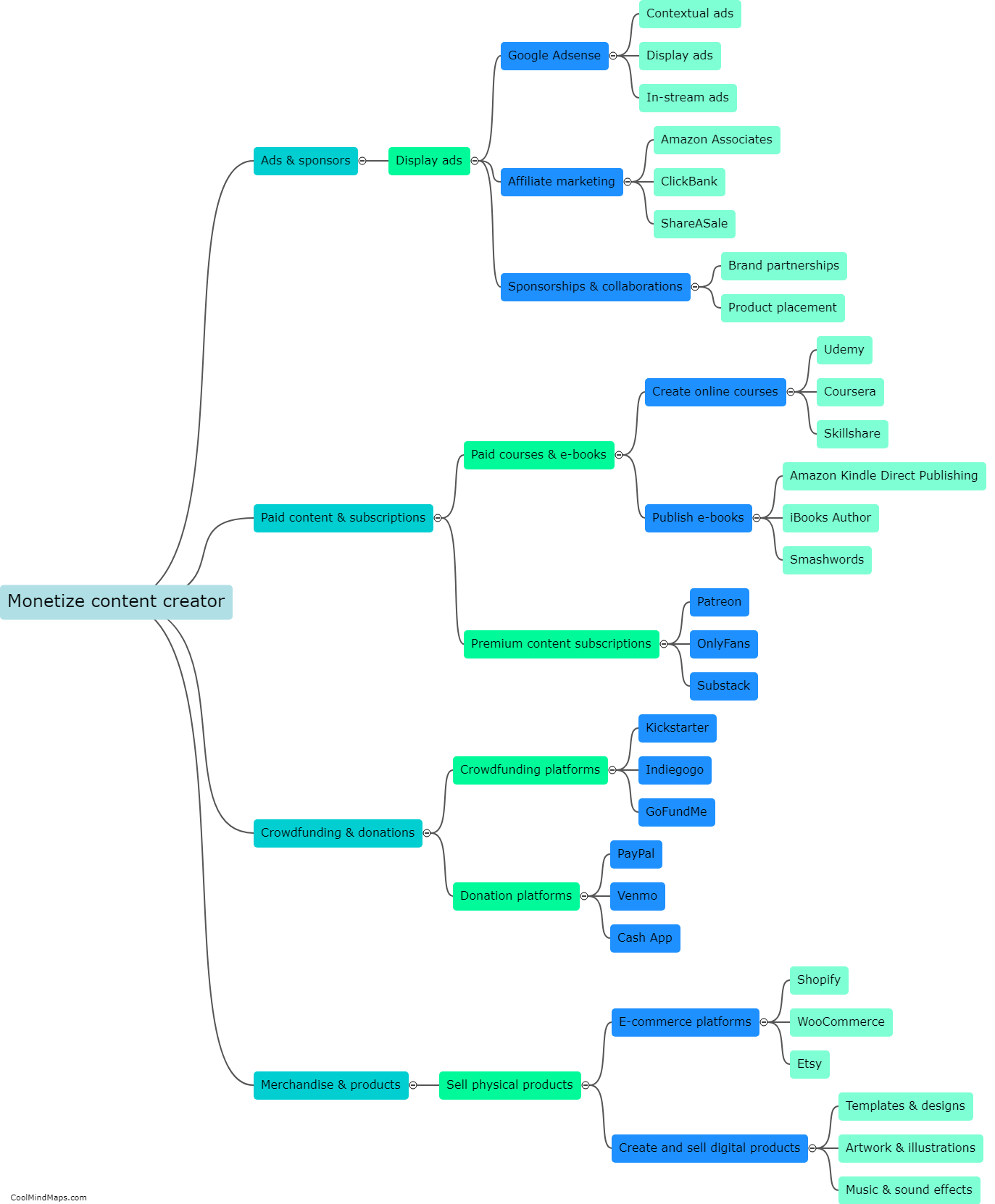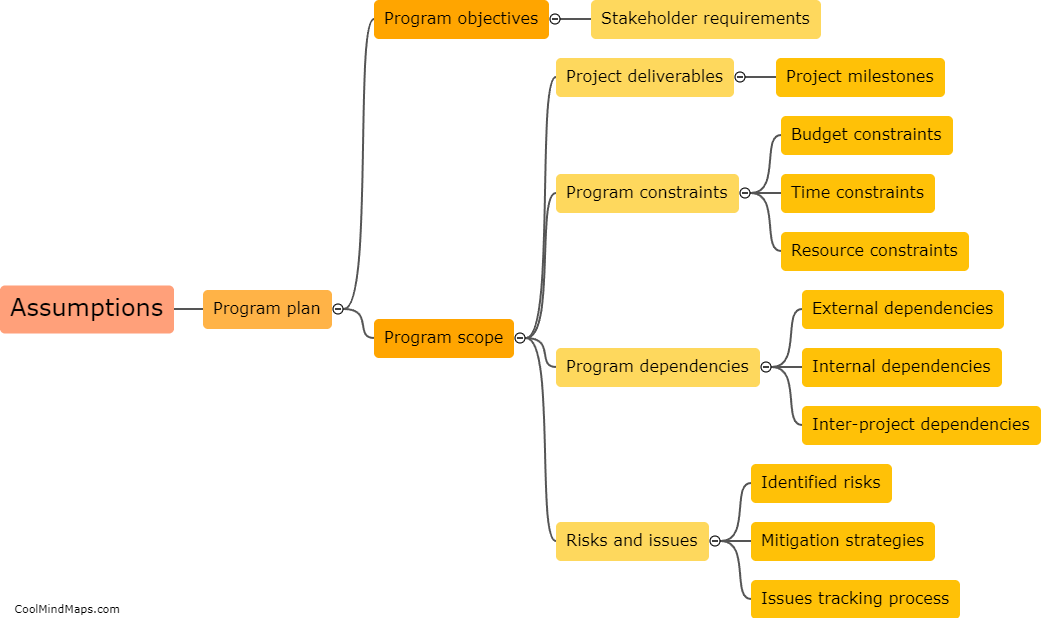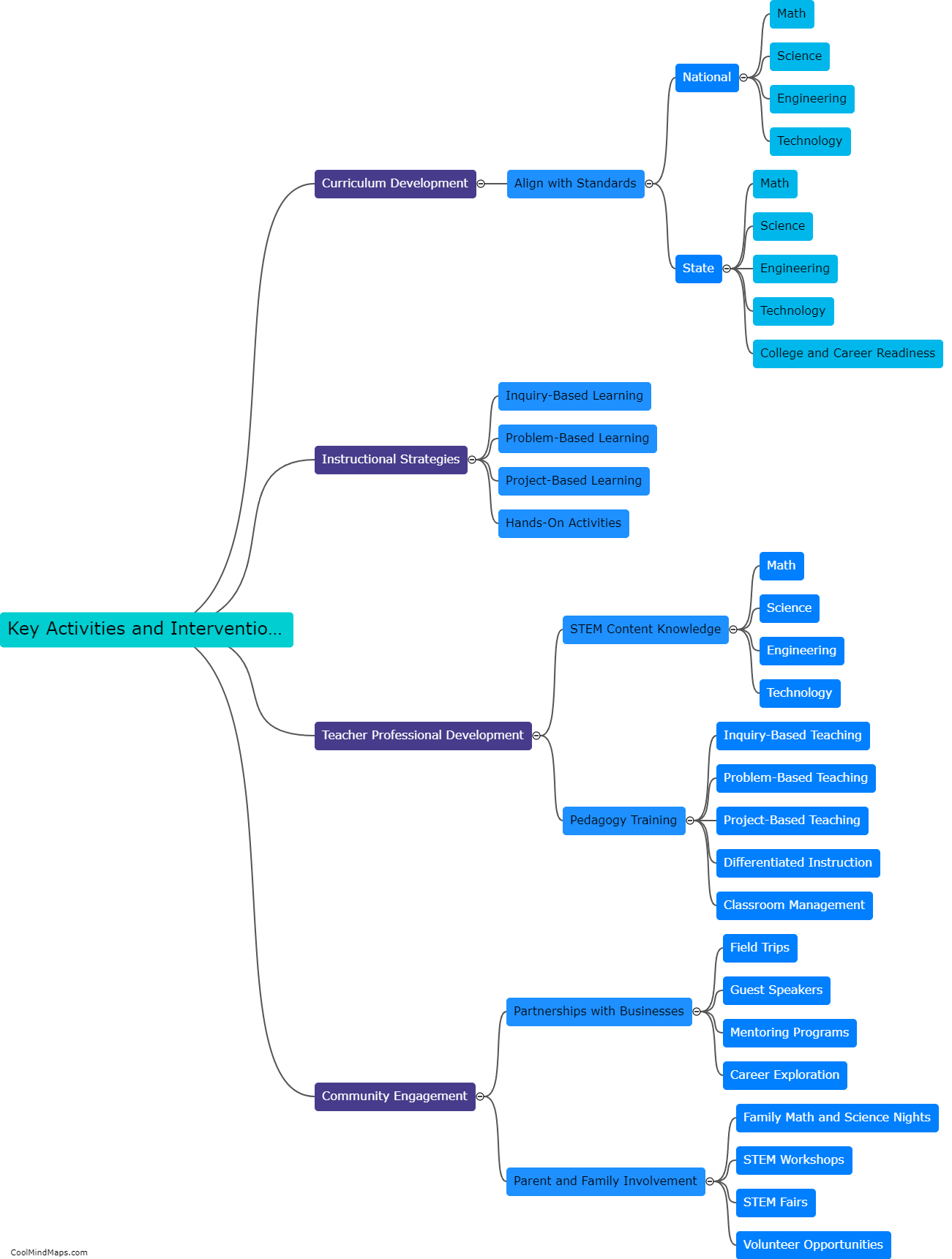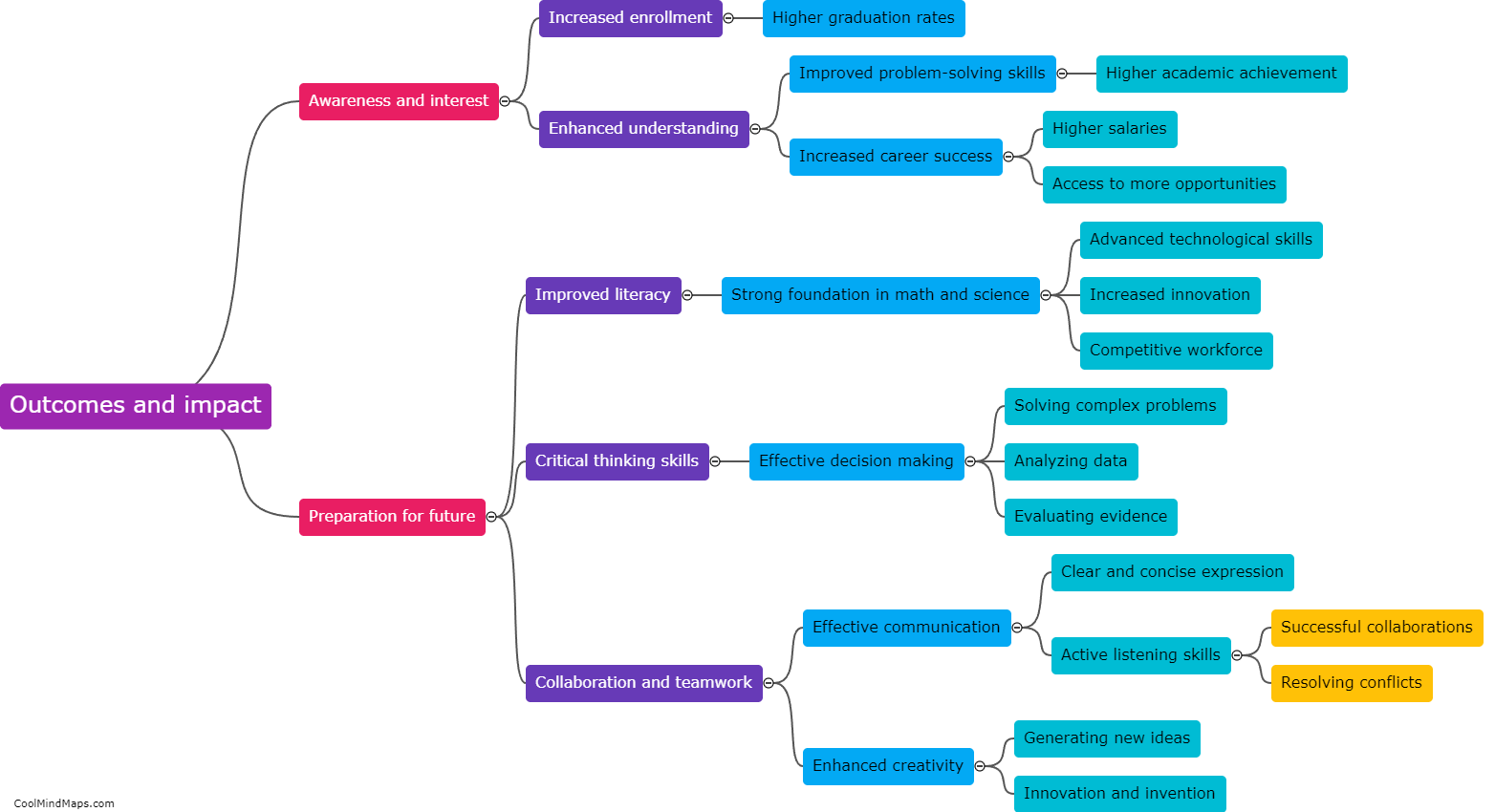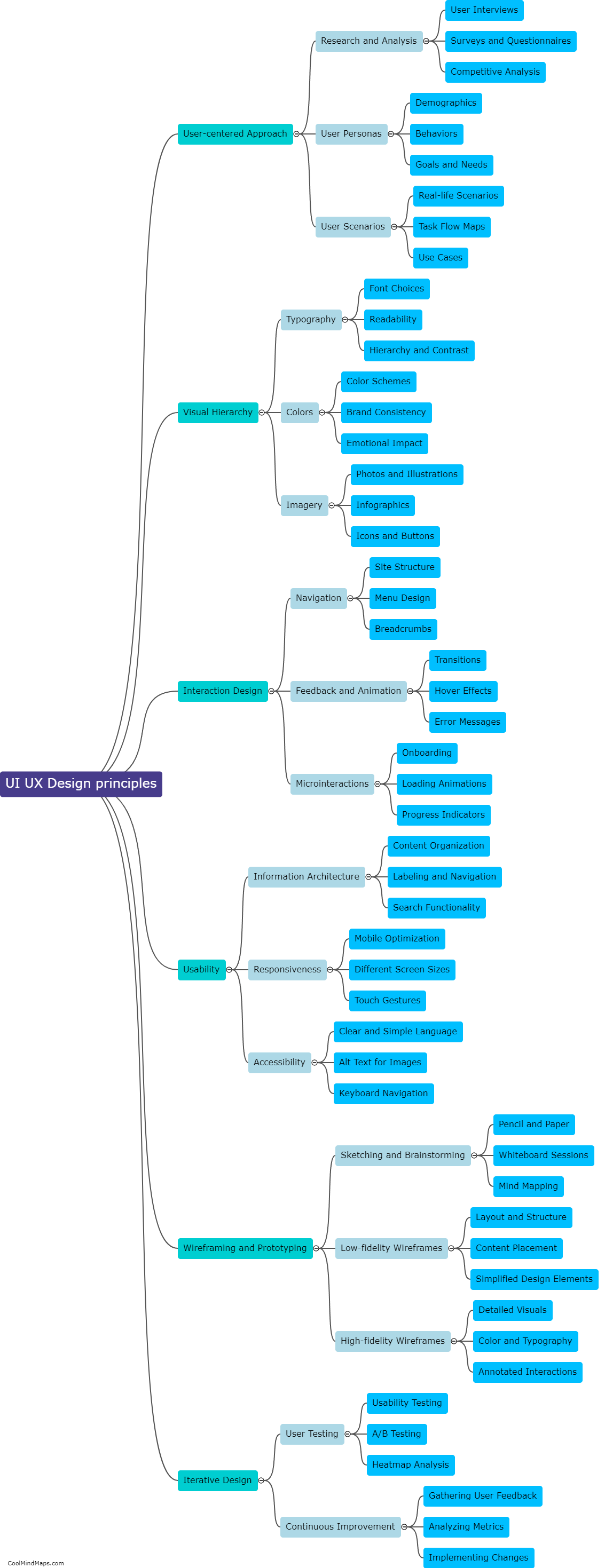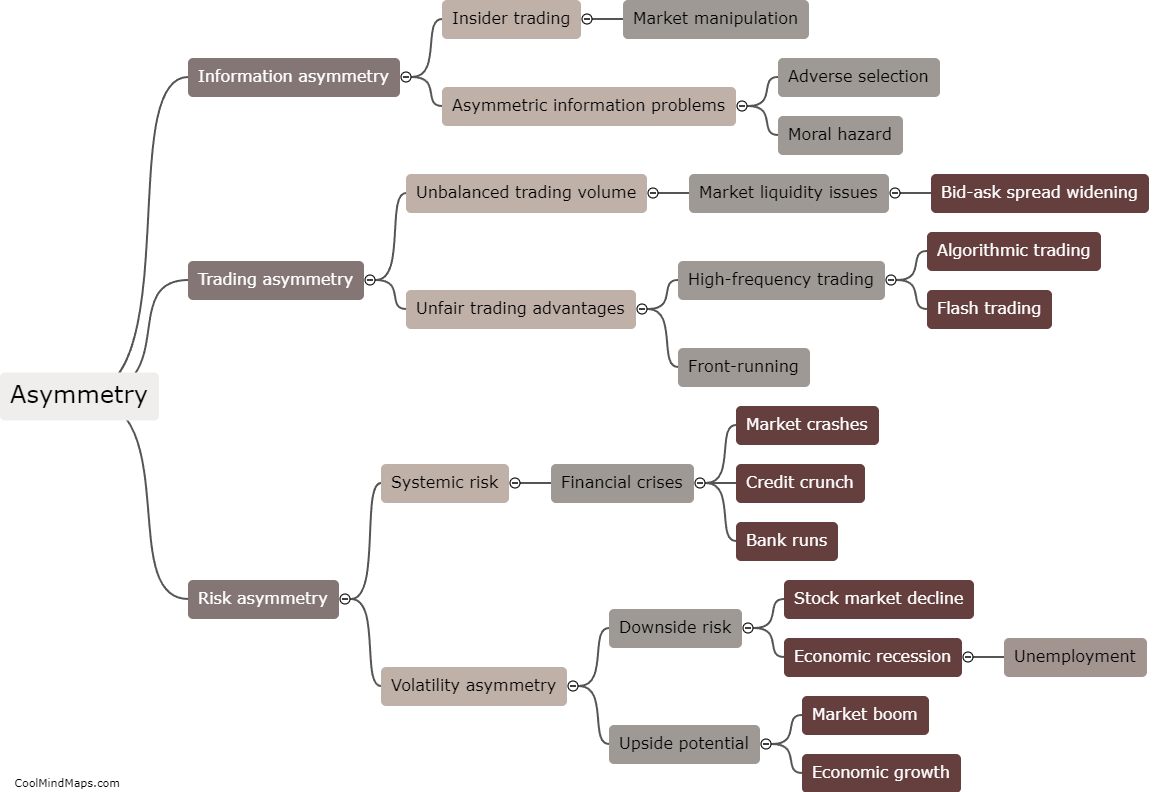What is the theory of change in a STEM program?
The theory of change in a STEM program refers to the underlying assumptions and logic that guide the program's design and implementation, as well as the expected outcomes and impacts it aims to achieve. It outlines the sequence of events and causal connections that are believed to lead to desired changes in participants' knowledge, skills, attitudes, and behaviors. The theory of change in a STEM program addresses multiple dimensions, such as the learning experiences provided, the instructional strategies employed, the role of educators and mentors, and the availability of resources and support networks. By mapping out the theory of change, program designers and evaluators can better understand the program's effectiveness, identify areas for improvement, and ensure alignment between program activities and intended outcomes.
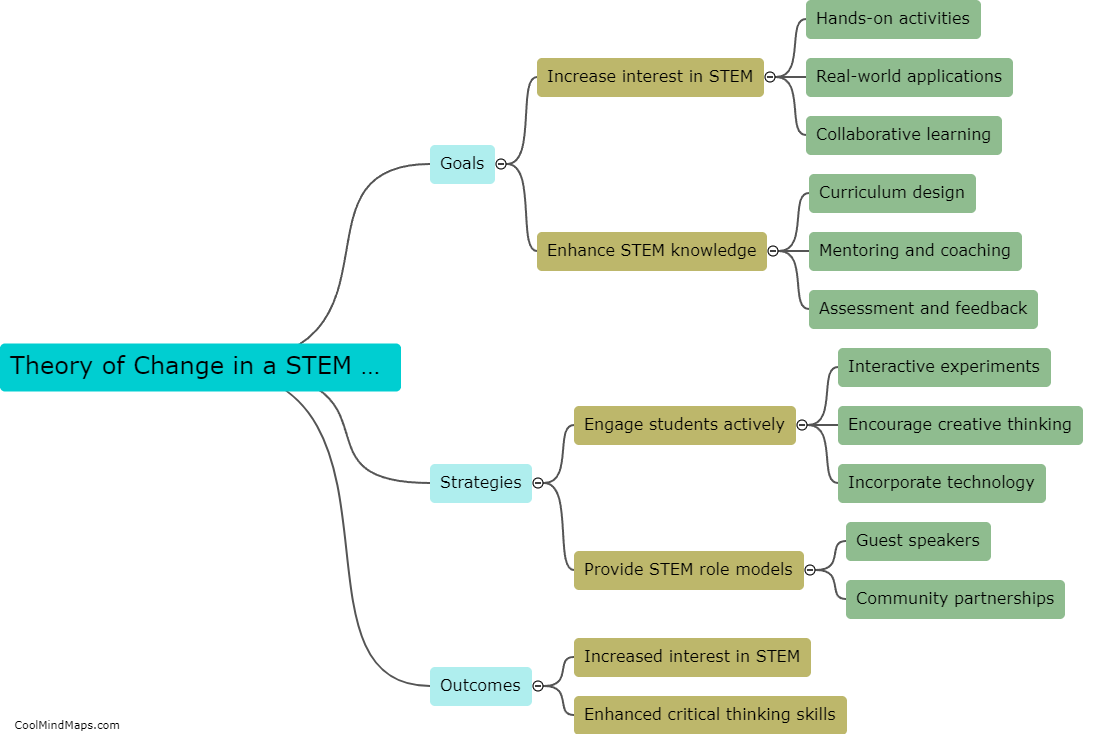
This mind map was published on 7 January 2024 and has been viewed 77 times.



